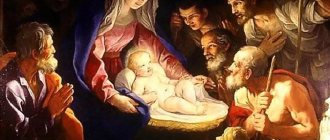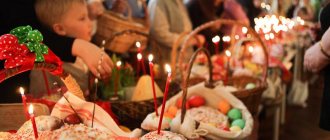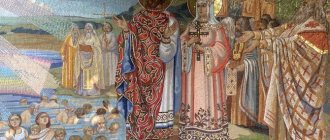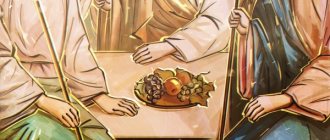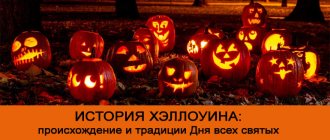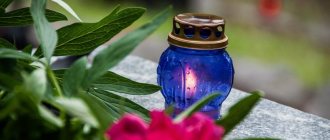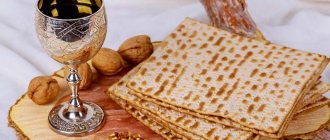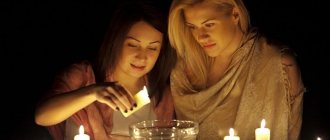Today, March 22, 2021, people celebrate the Magpie holiday (according to the old calendar style - March 9). As the church calendar says, on this day Orthodox believers honor the memory of 40 Martyrs of Sebaste.
About the holiday in the article:
- History of the Soroca holiday
- Traditions and rituals on March 22
- What not to do at 40 Saints
- Signs March 22
- How to tell fortunes about 40 saints
40 holy martyrs
History of the Soroca holiday
In the winter of 320, 40 Roman Christian soldiers were stationed in Sebastia (Armenia). Seven years earlier, the law on free exercise of religion had come into force, but many times they tried to force the soldiers to renounce the Christian faith, and this was done by their own military leader.
That winter day they were stripped, tied up and placed on a lake covered with ice. A bathhouse was erected on the shore so that the warm air would tempt them. Those who wanted to stop their suffering and warm themselves had only to tell the watchman that they were renouncing Christ. All night the men supported each other, not allowing anyone to give up or lose heart.
Just before dawn, one unfortunate man could not stand it and went to the shore. As soon as the hot air touched his skin, he collapsed dead. At that same second, a light of unearthly beauty spread over the other martyrs. This miracle shocked the watchman so much that he immediately undressed, stepped onto the ice and joined the martyrs.
When the commander realized that the soldiers were not going to surrender, he ordered that everyone’s knees be broken, burned, and the remains thrown into the water. What happened became known only three days later. The images of the sufferers appeared before the Bishop of Sebaste and told them everything. He found their remains and buried them with honors.
Prayer on the Day of the Forty Saints
Oh, the holy and glorious passion-bearers of Christ, the fourty, in the city of Sebastia, for the sake of Christ, who courageously suffered through fire and water and, like friends of Christ, entered into the rest of the Heavenly Kingdom, have great boldness to intercede with the Most Holy Trinity for the Christian race, especially for those who worship your holy memory and those who call upon you with faith and love. Ask the All-Bountiful God for forgiveness of our sins and correction of our lives, so that in repentance and unfeigned love for each other, having lived with each other, we will boldly appear before the Last Judgment Seat of Christ and through your intercession we will appear at the right hand of the Righteous Judge. To her, saints of God, be our protectors from all enemies, visible and invisible, so that under the shelter of your holy prayers we will get rid of all troubles, evils and misfortunes until the last day of our life and thus glorify the Great and Worshipful Name of the Almighty Trinity, Father, Son and Holy Spirit, now and ever and unto ages of ages. Amen
.
Traditions and rituals on March 22
- On Soroki, people pray to the Martyrs of Sebastia so that their loved ones will successfully complete their military service and return alive. On this day, they must go to church and light 40 candles, pray, thank God for everything, ask for protection from adversity, illness, bowing 40 times.
- People believed that on March 22 the second meeting of spring took place, when 40 species of birds returned from warmer regions, and the lark was among them. In honor of this bird, women prepared oatmeal or rye buns in the shape of larks, drizzled with honey. Treats were distributed to the children, and they asked the lark to hurry up spring so that it would come sooner. Birds were often strung on small twigs or reeds and baked that way. They were hung on trees in the garden, given to neighbors or given to children - so that the poultry on the farm would be healthy.
- It was believed that on this day the magpie takes forty rods or twigs and builds a nest from them. They said: Now magpie is the birthday girl. The magpie, if you do not disturb it and do not destroy its nests, acts as a kind of amulet for the house near which it lives. Etymologically, the word forty is related to the word forty, that is, the people believe that the forty was baptized on the day of the forty saints.
- At magpies, it is customary to invite close people to the house: the more there are, the better. The house should be noisy and fun.
- A magpie girl must break forty threads and break 40 wooden blocks in order to drive away winter very quickly.
- If it was warm, they sowed peas, believing that forty pods would grow on each stem, and forty peas in each of them.
- They scattered poppies throughout the garden, hoping for a harvest forty times greater than what was sown. To support these hopes, on the Forty Saints they cooked pea soup, made pea pancakes, baked pies with peas, and prepared dumplings with poppy seeds.
- If frost set in on the morning of March 22, they said that the Forties had begun - forty long frosty days. To prevent the cold from damaging the crops, people baked 40 balls of rye or oats, and for the next forty days they threw one out into the street.
services in the temple on the feast of Magpies - 40 saints
Forty forties in folk tradition
The holiday of Soroki, or Forty Forty, was considered in Rus' the second meeting of spring - between Candlemas and the Annunciation. Magpies was an extremely revered holiday among the people, one of the largest and most important of the year. It symbolized the end of winter and was associated with the spring equinox and the imminent start of field work.
In Rus' they said:
“On Soroka, day and night are measured: winter ends - spring begins.”
One of the symbols of the national holiday was birds returning from overseas. Forty different species were believed to return, but the lark . Birds, and especially larks, were to be honored with a special treat: for this, housewives baked Lenten cookies in the shape of birds ahead of time, usually forty pieces each, in memory of the martyred soldiers. The cookies were called larks in honor of the main heralds of spring.
Signs March 22
- Jackdaws and magpies are found in large numbers, which means it will soon be warm;
- What is the weather like in Soroca, it will be like this for another 39 days;
- If you hear thunder - it means a hungry year; If the frost lasts forty days, then it will be warm in the summer;
- Among the people, 40 saints are associated with the beginning of spring and the end of winter, so on this day they monitored the weather: what it would be like on March 22, the next 40 days would be like that.
- Although it is already a completely spring day, however, the echoes of winter, albeit faint, can still be heard. 40 birds fly to Soroki. Day and night measure up - spring begins. Warm magpies - forty days will be warm, cold magpies - expect forty cold mornings.
- As for the magpies, so does Petrovka (July 12). If on the day of the Forty Martyrs it melts so much that an ox can drink enough, then there will be a good spring. If the magpies pass without melting, the summer will be warm. What the weather is like on this day, it will be like that for another forty days. For forty martyrs - the arrival of larks: as many thawed patches, as many larks. Morning frosts begin and last for forty days. Having missed forty frosts after forty martyrs (after forty days), I eat this buckwheat. The tit began to sing - it bewitches warmth. Forty birds arrive, forty birds make their way to Rus'. The snow is melting and there is a friendly flood - wait for good grass. The wagtail will fly to Nikola - in twelve days the river will flow. The seagull has flown in - soon the ice will melt.
Lark cookie recipe
The dough was made with yeast, it had to be made elastic and well kneaded. They baked it in vegetable oil (for the sake of the strictness of Lent, they softened it a little), and brushed it with sweet, strong tea so that the cookies would brown well.
For the dough, we took two kilograms of flour, 50 grams of yeast, 250 grams of vegetable oil, a glass of sugar, half a liter of water, a little salt, and a handful of raisins. The dough was thoroughly kneaded, then rolled into a rope, which was divided into exactly forty parts. Each piece of the rope was folded into the shape of a bird, and a beak and tail were formed. The eyes were made from raisins.
The finished cookies were placed on a baking sheet greased with vegetable oil and left for about twenty minutes so that the dough rose a little. Then they greased the cookies with sweet strong tea and put them in the oven or oven. These cookies are baked for about twenty minutes at a temperature of approximately 180 degrees.
The finished cookies should be sprinkled with water and allowed to “rest” under a clean towel.
Cookies were given to children with the words:
“The larks flew in and sat on a head.”
The children not only ate cookies, but also crumbled them for the birds, uttering chants that would attract spring.
To protect against morning frosts, housewives in Soroka also baked forty small rye koloboks, which they threw from the windows to the birds for forty days.
/ Press service of the Committee on Natural Resources, Environmental Protection and Environmental Safety
How to tell fortunes about 40 saints
- All fortune telling is related to baking birds. For example, one of the buns is deliberately over-salted, a coin is placed in the second, and a ring is placed in the third. Whoever gets which bun will have such a life: someone will have sadness and annoyance if they come across a salty bird, someone will have prosperity if they pull out a coin, and a bird with a wedding ring will be for the wedding.
- There was another fortune-telling: the girls took the lark and threw it over their shoulders, where the bird would point its tail - from there the groom would arrive.
- The girls also got together and baked these dough birds together. Then they laid them out at the doorstep and called the dog: whose first bird the dog eats, he will be the first to get married.
- The girls also cooked forty dumplings and treated them to the boys so that the frost would not kill the lovage. A decoction of this plant is used to wash hair to charm men.
Temples in honor of the Forty Martyrs of Sebaste
In Constantinople there were about eight temples in honor of the 40 Martyrs of Sebaste, built by Queen Pulcheria (399-453) and Emperor Anastasius. The existence of the Church of the Forty Martyrs at the Golden Gate is also known.
In honor of the Forty Martyrs of Sebaste, a church was consecrated in the city of Veliko Tarnovo in Bulgaria. The temple was built in 1230 by order of Ivan Asen II in honor of the victory at Klokotnitsa over the Epirus despot Theodore Ducas on March 22, 1230. The king considered his victory to be the intercession of the Forty Martyrs of Sebaste, in whose honor the church was consecrated. It was the cathedral church of the Great Lavra in Veliko Tarnovo, built in the Tsarevets fortress on the left bank of the Yantra River. Saint Sava, Archbishop of Serbia (c. 1169-1236) was originally buried in this church. In May 1237, his relics were transferred to Serbia. During the years of Ottoman rule, until the beginning of the 18th century, the church remained Christian, but then the building was converted into a mosque, as a result of which almost all the frescoes were destroyed. Several images have survived only on the northwestern wall of the narthex. In the building of the former church, on September 22, 1908, the Bulgarian Prince Ferdinand (1861-1948) declared the complete independence of Bulgaria from the Ottoman Empire. The church was used for a long time as a royal tomb. Kings Kaloyan (1197-1207), Ivan Asen II, Mikhail Shishman (1280-1330), queens Anna Maria and Irina, as well as many members of the royal family and representatives of the Bulgarian aristocracy were buried here.
Church of the Forty Martyrs of Sebaste in Veliko Tarnovo (Bulgaria)
In honor of the Forty Martyrs of Sebaste, a church was consecrated at the Novospassky Monastery in Moscow. Probably, back in the 16th century there was a wooden temple on this site. The church was rebuilt several times. In 1932, the temple was closed by the Soviet authorities, the bell tower was partially cut down. In 1993, the temple was transferred to the local community of the Russian Orthodox Church and restored.
Church of the Forty Martyrs of Sebaste near the Novospassky Monastery. Moscow
In honor of the Forty Martyrs of Sebaste, a temple was consecrated in the city of Pereslavl-Zalessky. The church is located at the mouth of the Trubezh River in the historical Rybnaya Sloboda on the shore of Lake Pleshcheevo. The church already existed at the beginning of the 17th century. It is mentioned in the patriarchal salary books under 1628: “Church of the Saints Forty Martyrs, on the settlement, tribute eight altyns, four money, ten-dollar hryvnia.” In 1652, Pokrovskaya was built next to this church. In 1726-1727, both churches turned out to be dilapidated and new wooden churches were built. In 1755, instead of two wooden ones, a stone temple was built, which now exists. There are two altars in the church: in honor of the Forty Martyrs and in honor of the Nativity of the Blessed Virgin Mary.
Church of the Forty Martyrs in Pereslavl-Zalessky
Customs and traditions on the Feast of the 40 Saints
Some traditions have pagan roots. On March 22, girls need to break forty wooden blocks, break forty ropes - this will drive away the evil spirits that have frozen our land. If this ritual is followed, then winter will certainly run away, and the world will be filled with bright spirits, which will certainly pave the way for spring so that it can calmly assume its rightful rights.
In some villages, the tradition of swinging on a swing on March 22 has been preserved - the harder you swing and fly higher, the more productive the year will be, and the happier the people will be.
A good tradition on the spring holiday is to decorate a tree with paper or rag flowers, bright ribbons, and bells. Spring will certainly see such a miracle and will definitely fly to us, drive away the boring winter and come into its own. The tree is carried around the village and placed in the place where they decided to usher in spring. They dance around the tree and sing songs about spring.
When will there be 40 saints in 2021 - March 22
40 Saints is a permanent holiday. This means that it falls on the same day every year - March 22nd.
The memory of the 40 Martyrs of Sebastia is one of the main and very revered holidays, the Liturgy is held and Lent is a little easier. You can eat food with sunflower oil, and also drink Cahors.
The history of the holiday is connected with the year 320 and the city of Sebastia, where the ancient Roman emperor Licinius ruled - an ardent opponent of Christianity, a supporter of paganism and pagan rituals. Let us note that Constantine the Great, back in 313, issued a decree that gave freedom of religion to the Orthodox and equalized their rights with pagans.
So, the soldiers who were part of the Roman army were forced to sacrifice to pagan idols. However, they believed in Jesus Christ and did not make sacrifices. Then the order was given in the evening to undress these warriors and place them in an icy lake. A bathhouse was placed nearby so that anyone who wants to renounce their faith in Jesus Christ could go there and warm up. In the morning, one of the warriors did just that, but as soon as he entered the room he died.
The Roman Aglai, seeing the willpower of the warriors, also undressed and plunged into the icy water. Other Roman soldiers, noticing that the martyrs were not giving up, decided to break their legs and burn them. According to legend, the bones were thrown into the lake so that believers could not collect them.
As you know, a few days later, forty martyrs came in a dream to Bishop Peter of Sebaste and ordered their remains to be buried. The next night the bishop collected all the remains and buried them with honors. Thus, the 40 martyrs did not renounce their faith and remained devoted to Jesus Christ. Therefore, in the Orthodox world this day is considered a holiday, with many traditions and rituals associated with it. Many of these traditions, however, are also associated with paganism.


